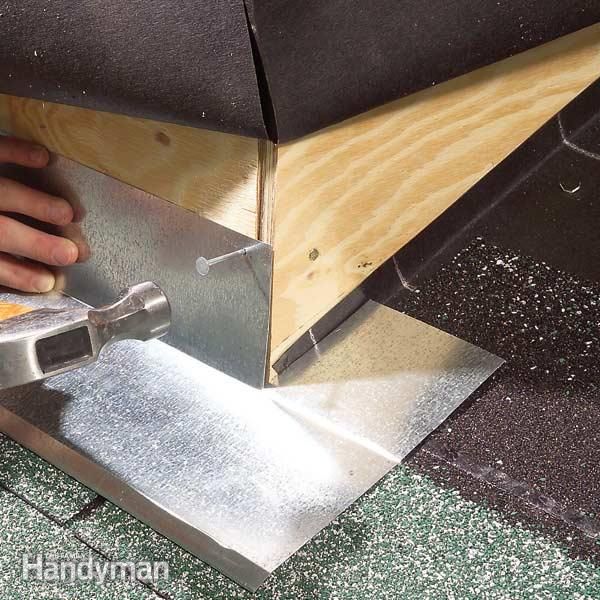Flashing Roof To Sidewall

Now we can put our sidewall trim up make our marks for cutting and folding and install it.
Flashing roof to sidewall. Below are two photographs of roof wall step flashing completed and effective of a slate roof against a brick wall below left and in process with step flashing against a dormer sidewall before the dormer siding has been put in place below right. In the 2012 irc the section that covered sidewall flashing was much expanded and for the first time it included continuous flashing as an approved method for roof to sidewall flashing with asphalt shingles. Even if one piece of step flashing fails the flashing and shingle below it start the. Continuous flashing has always been used at a headwall an intersecting wall at the top of a roof plane and perpendicular to the slope.
Flashing against a vertical sidewall shall be by the step flashing method. At the end of the vertical sidewall the step flashing shall be turned out in a manner that directs water away from the wall and onto the roof and or gutter. We discuss the importance of keeping wood siding clear of the roof surface the need for flashing at the dormer side to roof intersection and the need for counter flashing at step flashing. A sidewall is a junction between a wall and a sloped portion of a roof.
The flashing shall be a minimum of 4 inches 102 mm high and 4 inches 102 mm wide. This is the sidewall flashing from american building components. The wall side of the flashing can either be covered over with siding or sealed with caulk. This article describes mistakes at roof dormer sidewall flashing and roof dormer sidewall coverings that invite leaks rot and insect damage on buildings.
Epdm flashing tape with a butyl adhesive backing will. Vent flashing done right to prevent leaks back up roof vent boots with flashing counterflashing and proper shingling. The horizontal part of the flashing will vary depending on the type of roof covering material. Except where walls are brick the vertical part of the sidewall flashing should extend up behind the exterior wall covering just like with headwalls.
Sidewall flashing is applied when the side of the roof butts up against an adjacent wall. Continuous flashing is sometimes seen where a roof meets a sidewall but in the long run step flashing will do a better job of preventing water leaks. How to install sidewall flashing and kick out diverters on homes with rigid foam insulation sheathing. Here s how to install it correctly.
Apply drip edge and roof underlayment over the roof deck and continue lapping up the sidewall and over the water resistive barrier in this case rigid foam insulation a minimum of 7 inches figure 2. It s a standard l trim and we use this trim most often in a concealed or hidden fastener application. Installing step flashing to prevent roof leaks step flashing spans the joint between roof shingles and an adjacent side wall. Step flashing redirects the water back onto the shingle.














































